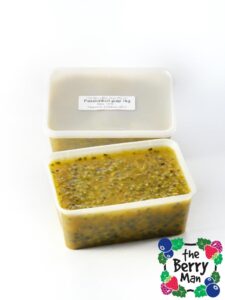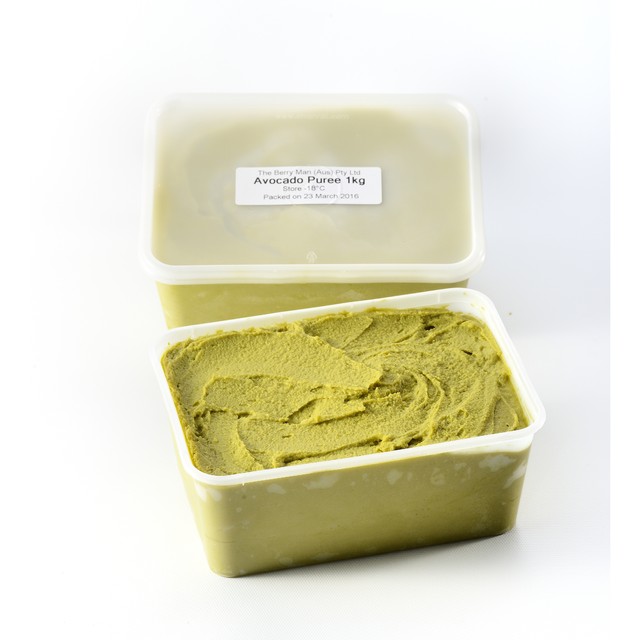Table of Contents
 Fruit pulp is the most basic product created by the processing of fresh fruit. It contains both the juice and the pulp, which is the stringy fibre which is often removed from fruit juice.
Fruit pulp is the most basic product created by the processing of fresh fruit. It contains both the juice and the pulp, which is the stringy fibre which is often removed from fruit juice.
Fruit pulps can be processed and stored for long periods of time without losing their colour, flavour or texture. They are used in a huge range of applications including gelato, fruit flavoured yoghurt, jelly, fruit drinks, jams, lollies and even specialty beer brewing.
Before you use fruit pulp, it’s important to understand the differences between each type of product and how it is processed so that you can confidently plan your production and operations, and get the results you need from each ingredient.
The different processing formats have a big role in:
- The grade of fruit selected;
- How the finished pulp is handled; and
- What flavours, colours and aromas you can expect.
Outlined below are the different type of fruit pulp products available, the key differences to be aware of, and how each is best used.
Fresh Frozen
How it is prepared:
- Only the best quality fruit is used.
- Fruit is typically hand-sorted.
- No torn, rotten or over-ripe fruit is processed as it may ruin the batch.
- Sound fruit is pulped, it may be pH stabilised using acid additions (citric, ascorbic).
- Sugar levels (brix) may be adjusted to correct for natural fluctuations in sweetness.This is done to match the natural brix level of the fruit and maintain a consistent product (competing products will have a nice flavour but will list water and sugar as primary ingredients).Typically the batch sizes are smaller because it’s inherently a riskier process because it uses a more expensive product.
Impact on price: Fresh frozen is the most expensive option due to the labour-intensive sorting and inspection required, and also because any fruit that doesn’t meet specification is discarded, meaning yields are lower.
Aroma, flavour and colour: The pulp should taste like you blended the fruit fresh yourself, without freezing. You should also get the full range of flavour, aroma and colour.
Handling: Must be stored frozen. Defrost in a 4C fridge and use within a few days of defrosting.
Application: Fresh frozen pulp is best used when that single ingredient is the key defining flavour of the end product, e.g. mango gelato, strawberry sauce etc. It is also best used when the product has a nutritional focus, as the nutrients in the fruit are best preserved when the product is unheated, i.e. raw cold pressed juice.
Pasteurized
How it is prepared:
- Fruit is not hand-sorted.
- Bulk bins of fruit are processed without individual inspection, with some unsuitable product discarded.
- Fruit is pulped and heated to 95C for 10-30 seconds to destroy organisms that may spoil the product (e.g. yeast, mould, enzymes).
Impact on price: Cheaper than fresh frozen due to improved yields (less fruit rejected) and a more mechanised process with less manual intervention.
Aroma, flavour and colour: Flatter flavour and aroma. It resembles fresh but misses some of the upper flavour notes, with a darker colour due to heating.
Handling: Product must be stored frozen. You can get up to a week after defrosting to use the product due to lower starting micro levels.
Application: Can be used for sorbets/gelato but the flavour is not as prominent. Beer brewers may prefer this product if the beer has to travel long distances in variable temperature environments. Because it is heated to destroy organisms that may spoil, you may also prefer this product if your customers are high risk, or the impact of failures is high e.g. airline foods.
Aseptic
How it is prepared:
- No sorting of fruit for over/under ripe or torn skin.
- Bulk bins processed with little fruit discarded.
- Fruit is rapidly heated to around 135C for 1-2 seconds then cooled, packed into sterilised packaging.
Impact on price: A highly mechanised processes means production costs are low. As very little fruit is unsuitable the yields are high resulting in overall low unit costs.
Aroma, flavour and colour: Aroma is indistinct, flavour is flatter and colour is darker due to caramelisation of sugars.
Handling: Safe at ambient temperatures for months to years due to low oxygen in UHT packs and zero starting micro count.
Application: Best used where cost is critical, where this ingredient doesn’t play a critical role in the overall flavour profile of the end product, or where the flavour of this ingredient is not prominent. Examples might be using aseptic banana in a “mango, pineapple and banana” fruit drink.
Concentrate
How it is prepared:
- No sorting of fruit for over/under ripe or torn skin.
- Bulk bins processed with little fruit discarded.
- Fruit is pulped, depectinised and filtered to form a clear thin juice.
- Juice is then heated and reduced to form a concentrate of standard brix e.g. 40, 65.
Impact on price: Per kilo it is the most expensive product, but once you rehydrate it is typically cheaper than aseptic.
Aroma, flavour and colour: As per aseptic, the flavour resembles fruit, but is a significant departure from the original flavour. Texture once rehydrated is very liquid.
Handling: Can be stored ambient but best kept frozen. If stored ambient it’s possible for mould to grow where condensation droplets form on the inside of the packaging. Typically found in 20kg packs or 200L drums.
Application: Extensively used in the beverage industry, also in jams and production of fruit lollies.
The Berry Man has a range of fruit pulps available to suit your needs and budget. Give us a call or check out our range or products online.

